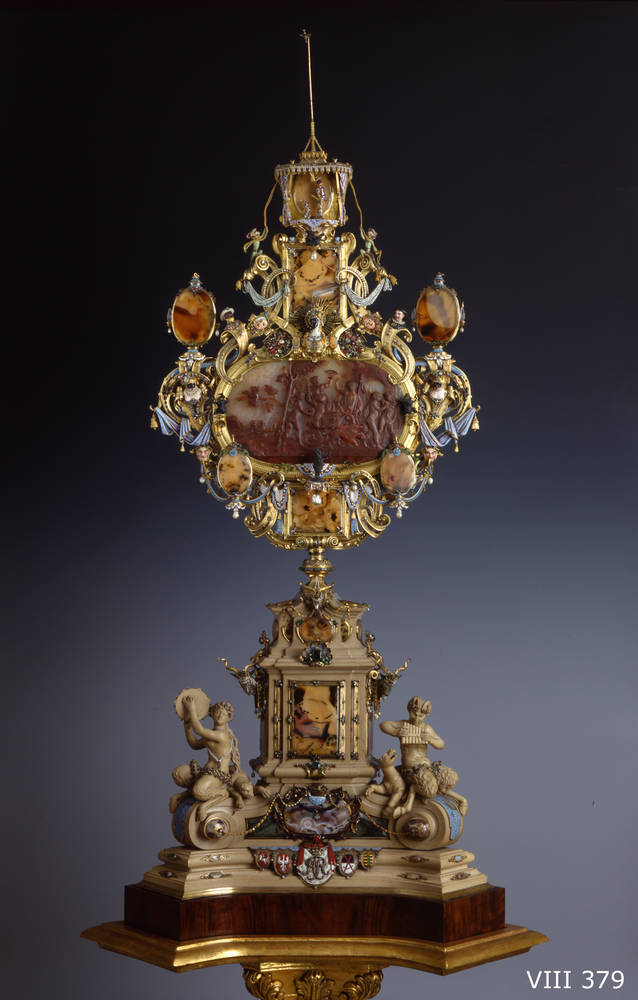Klaus Wehner
“Having found a batch of slides of whole-body self-portraits I took of myself when I was a Photography student in 1995, I immediately thought to use them for a new montage. My aim was to move away from the reference to Christian reliquary shrines and monstrances (as in the earlier series 'Body & Soul' and 'Hierophilia’). During a visit to the Grüne Gewölbe in Dresden, I fell in love with the crazy playful, mundane and frivolous cabinet pieces designed by the jeweller Johann Melchior Dinglinger and his workshop in the early 18th Century. Three-dimensional sculptural intricate Wimmelbilder with seemingly endless detail to discover! There is a trilogy called ‘Drei Phasen der Lebensfreude’ / ‘Three stages of the Joy of Life’ and its referral to the Baroque ‘memento mori’ theme makes it thematically stand out within the collection. The center-piece is called ‘Höchste Freuden des Lebens’ / ‘The Highest Joys of Life’ and this is what I used as a vague starting point for the overall shape of my montage. The shape of Dinglinger's Kabinettstück is similar to a monstrance to start with and as my own work progressed the ray-like dynamic around the centre increased the similarity to the shape of a monstrance or reliquary - and happily embracing the result of a work-flow is a welcome part of the process for me. (Somehow, I am sure that Dinglinger's works will continue to be an inspiration for future works of mine.)
Johann Melchior Dinglinger, "Höchste Freuden des Lebens", Kabinettstück,
1728. Grünes Gewölbe, Staatliche Kunstsammlungen Dresden; Foto: Jürgen Karpinski
1728. Grünes Gewölbe, Staatliche Kunstsammlungen Dresden; Foto: Jürgen Karpinski
I have made this montage in April and May 2020 – spending most of my time in self-isolation, home alone due to the Corona crisis. This is a pertinent moment to reflect about the fragility of the body. Working with self-portraits that are 25 years old – of course also makes me think about life's progress youth, ageing, growing, health, changing viewpoints and changing life priorities. This also why I am adopting the title from the Dinglinger trilogy, as a reflection on the joy of life is a good thing at a time of crisis and fear.”

Klaus Wehner is a visual artist with a practice grounded in a life-long passionate love for photography, video and also digital montage of both still and moving lens-based images. A continuous overarching theme for Wehner is the role and function of art as both cathartic and also political - even when it doesn’t seem to be. This has also led to a large body of work reflecting on museums and collecting-culture.
Much of the work can be seen here: www.museumclausum.org
Homepage︎︎︎
© Dialogues 2025
